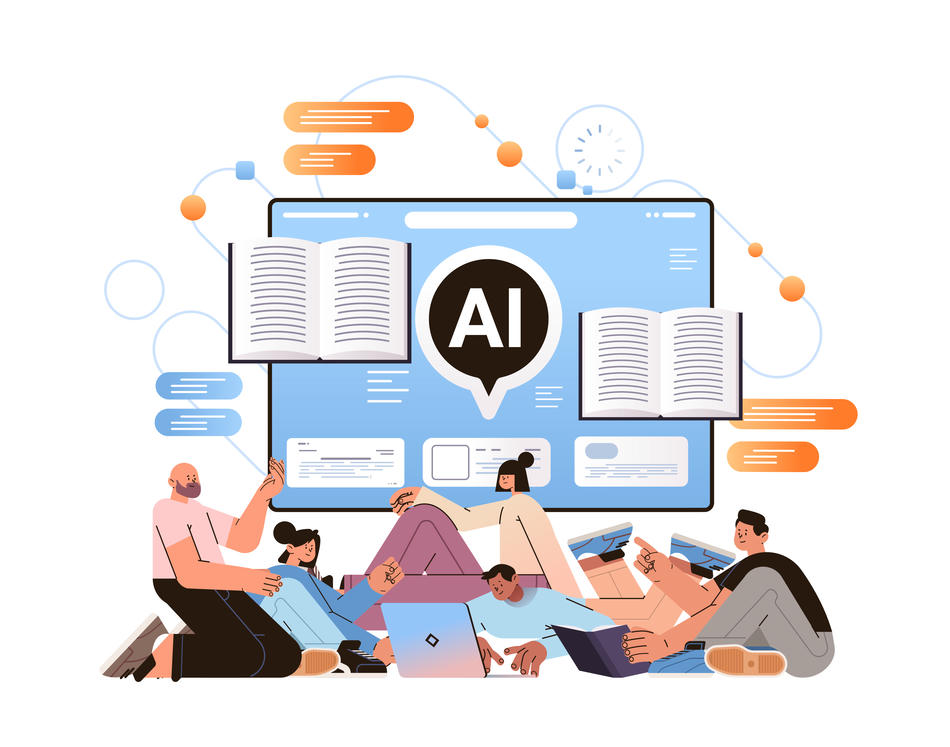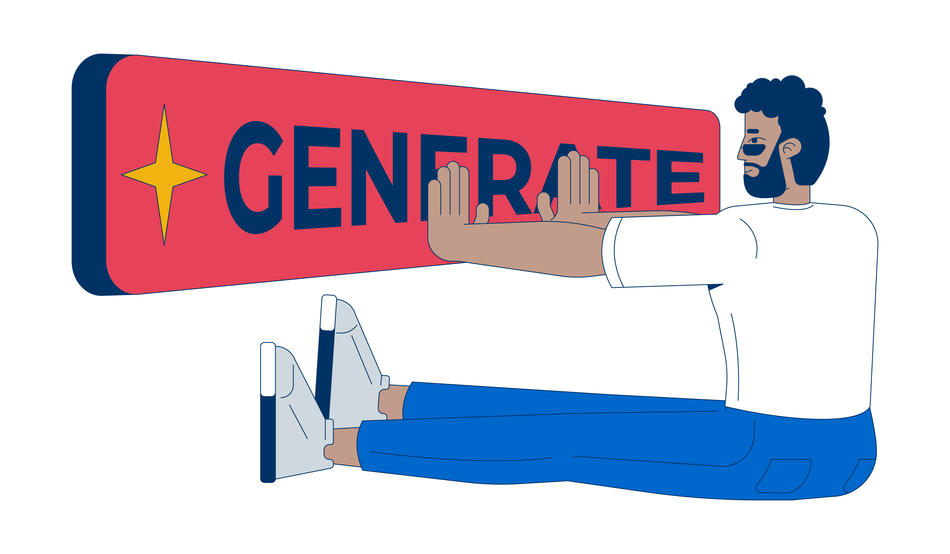
If you’re not yet using AI in your work, you’re already falling behind. Large businesses have been leveraging artificial intelligence for years to work smarter and stay ahead of the competition—now it’s your turn to catch up.
In this article, you’ll discover 10 proven strategies on how to use AI for content creation effectively. We’ll also share practical tips, recommended tools, and real-life examples to help you start right away. Keep reading to learn how to transform your creative workflow with AI!

Best AI content marketing tools for content creation
AI Image Generator by Depositphotos . Turn text into high-quality, licensed photos, illustrations, and designs. Ideal for marketers and creators who need unique, on-brand visuals quickly.
An AI writing assistant by Grammarly. Enhance the clarity, tone, and correctness of your writing. Grammarly’s AI helps polish your content, catch grammatical errors, and improve readability.
An AI assistant by Notion. Automate content marketing tasks such as creating meeting agendas, summarizing content, translating text, and refining copy or design ideas.
An AI-powered collaboration assistant by Figma. Test ideas, edit visuals, rewrite UI copy, and accelerate your creative process. Figma’s AI tools help streamline design workflows and speed up iterations.
Background Remover by Depositphotos. Isolate objects and remove unwanted backgrounds from photos and illustrations. Perfect for creating clean, professional-looking visuals for your campaigns.
ChatGPT by OpenAI. Generate ideas, outline articles, draft blog posts, or brainstorm marketing copy. ChatGPT is a powerful tool for producing high-quality long-form content and creative prompts.
Paraphrasing tool by QuillBot. Quickly rewrite existing copy to improve clarity, avoid redundancy, or tailor messages to different audiences. Great for content repurposing.
AI keyword suggestions by Ahrefs. Discover high-impact keywords and optimize your content for search engines. Ahrefs’ AI-driven insights help you boost SEO performance and content visibility.
How to use AI for content creation in 10 different ways
1. Content ideation
Creativity comes and goes—but deadlines don’t. When inspiration runs dry, AI can step in to generate fresh ideas for blog posts, newsletters, videos, and social media.
With the help of AI content marketing tools, you can streamline brainstorming, research, and topic selection based on your industry and target audience. These platforms also analyze keywords, trending topics, and performance insights to generate content ideas that are both timely and relevant.
2. Image generation
Custom visuals almost always resonate better with consumers than generic stock photos. In fact, 78% of customers see personalized imagery as a sign that a brand genuinely values building a strong relationship with its audience.
AI-powered content creation tools make producing on-brand images that align with your messaging and audience preferences fast and easy. Whether creating illustrations, social media graphics, or product visuals, you can go from concept to completion in as little as 15-20 seconds—even for complex designs.

3. Content optimization
Even if some of your existing content isn’t performing well, it doesn’t have to go to waste. AI can analyze what’s not working and guide you toward more impactful versions.
You’ll receive actionable recommendations on clarity, formatting, keyword use, internal linking, and text structure by feeding your blog posts into AI content marketing software. It also suggests SEO improvements such as refining meta tags, optimizing headings, and adding effective alt text to make your content more visible to search engines and more engaging for your audience.
4. Write short copy and detailed articles
When most people think of AI for content creation, copywriting is often the first thing that comes to mind. With tools like ChatGPT and Gemini, anyone—from marketers to designers—can quickly generate informative or creative text for various purposes.
To get started, learn how to use AI to create content for headlines, social media captions, email subject lines, and product descriptions. Once you’re comfortable with short-form writing, take it further by producing long-form content such as blog posts, how-to guides, case studies, press releases, and white papers.
5. Conduct keyword research
In 2025, high-quality content is just the starting point. The next challenge is visibility—and that begins with strategic keyword research. If you’re unfamiliar with SEO techniques, intuitive digital tools make the process far more accessible.
For example, Ahrefs helps users uncover valuable keyword ideas from a database of over eight billion search queries. Just select your preferred platform—Google, Bing, YouTube, or Amazon—and let the tool surface the most relevant opportunities for your content.
6. Refine and proofread your writing
AI-driven content creation isn’t just about starting from scratch. It’s also a powerful way to elevate what you’ve already written. With AI writing assistants, you can catch typos, fix grammar issues, and fine-tune your tone and style.
If a sentence doesn’t feel quite right, artificial intelligence makes it easy to rephrase. An email can become more engaging, while a social media caption turns sharper and more compelling—with just a few tweaks.
7. Get content marketing insights
Using AI to create content also means using data to understand what drives results. With AI-powered analytics platforms such as Google Analytics or Sprout Social, you can uncover which types of content have performed best—and why.
Tools like SimilarWeb reveal your competitors’ content strategies, highlighting what works for them and where your brand can stand out. Semrush, on the other hand, surfaces emerging trends and pinpoints growth opportunities across your blog and other marketing channels.
8. Perform competitor analysis
Many companies may not admit it, but competitor analysis often drives the most successful content strategies. Studying what others in your industry are doing helps refine your own content creation and marketing approach.
AI tools empower teams to go beyond surface-level insights. You can explore your competitors’ SEO tactics, top-performing keywords, and backlink profiles. Even more valuable, artificial intelligence highlights strategic gaps—giving you opportunities to stand out and gain a competitive edge.
9. Turn long articles into bite-sized content
Research shows that nearly 80% of people prefer short videos over other types of media when exploring new products. That’s why repurposing long-form content into quick, engaging pieces is a smart strategy—and AI-powered content creation makes it easier than ever.
You can start by generating detailed articles, then use the same tools to transform them into short videos, social media snippets, or email teasers. These bite-sized formats instantly grab attention, while your long-form content provides the depth needed to inform, build trust, and drive conversions.
10. Get instant translations
One of the most practical uses of AI in content creation is instant translation. Standard tools like DeepL handle simple translations, but AI-powered platforms such as Notion AI can translate entire pages and databases with a single click—right within your workspace.
This seamless process simplifies localization for both internal teams and global audiences. As a result, you can focus on producing high-quality content instead of spending time on manual translations.
Conclusion
If you’ve been considering AI content marketing tools, now is the perfect time to give them a try. Artificial intelligence is more accessible than ever, and the businesses that embrace it today will most likely stay ahead tomorrow.